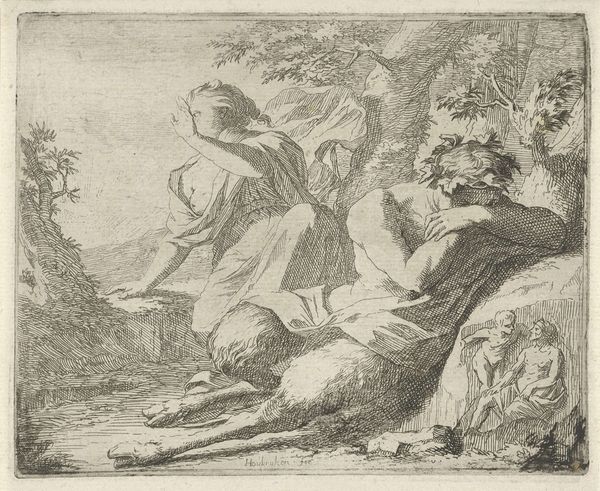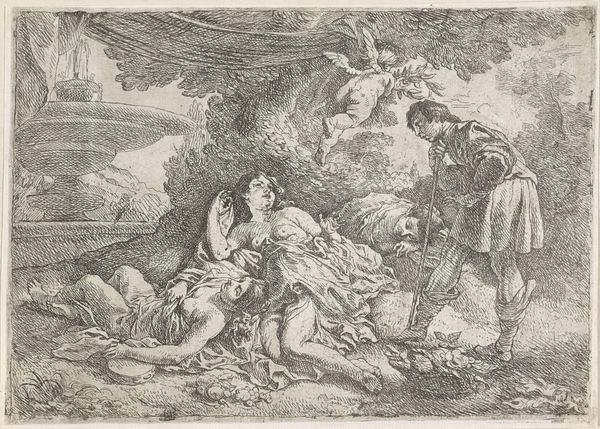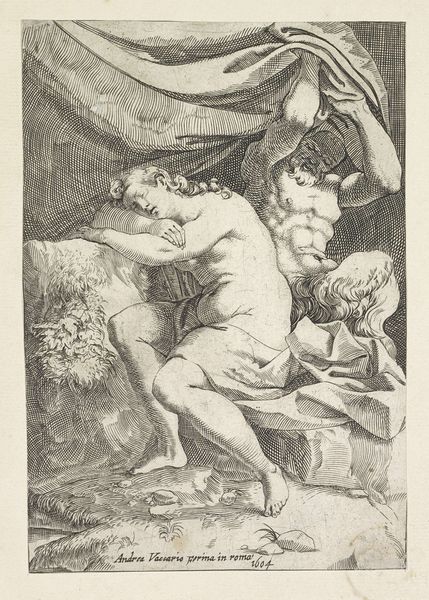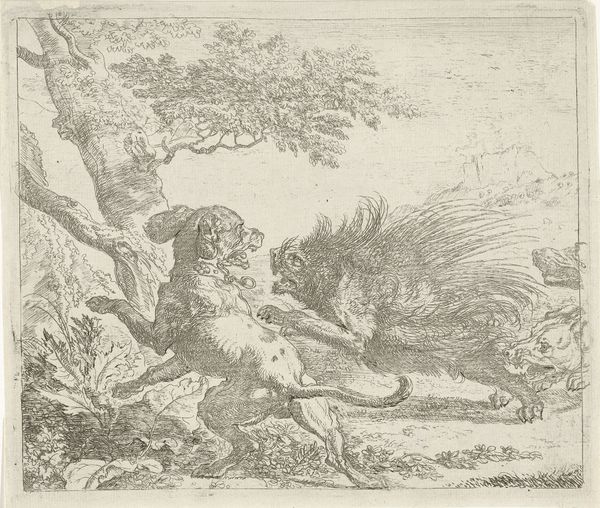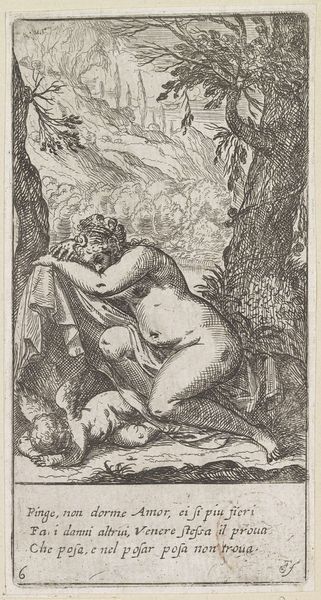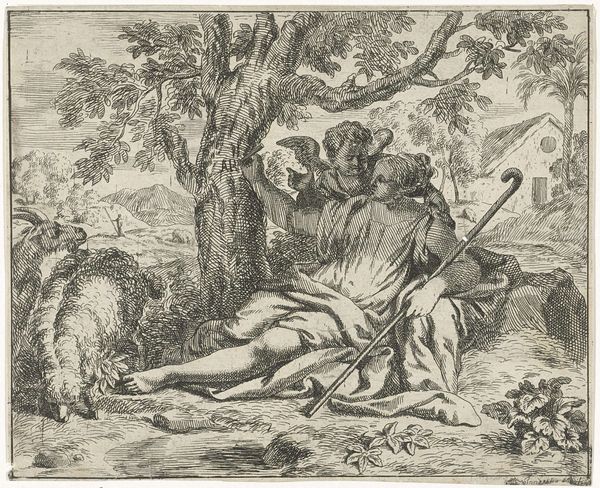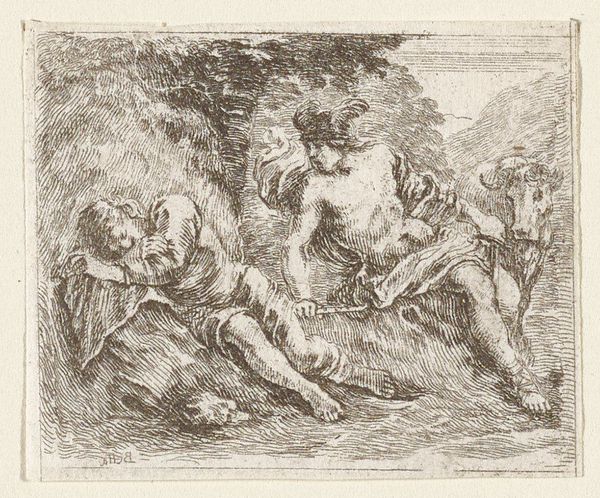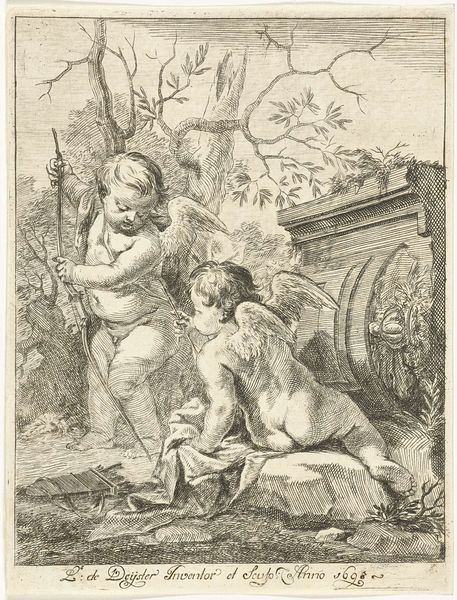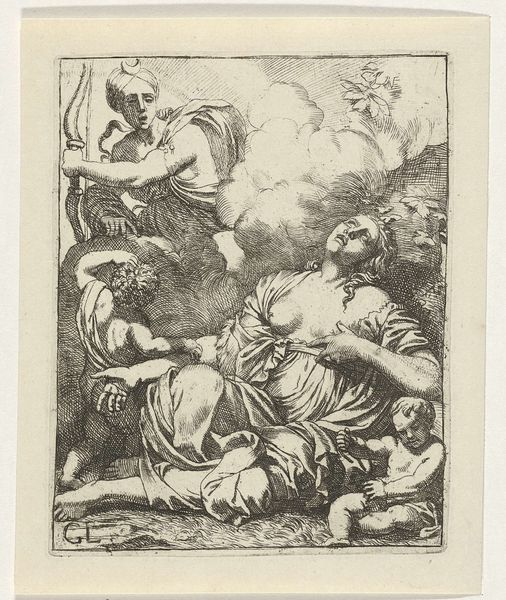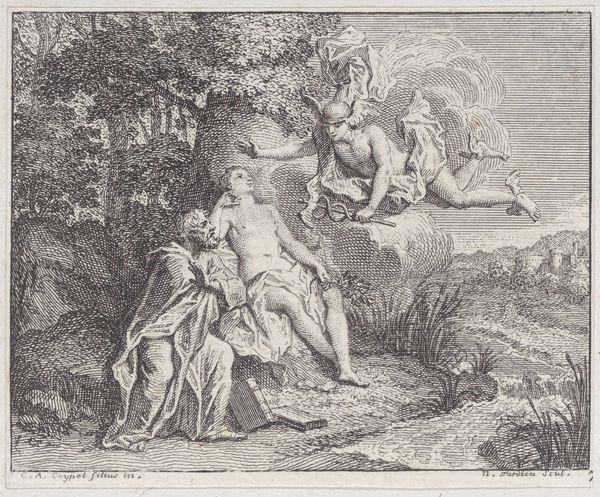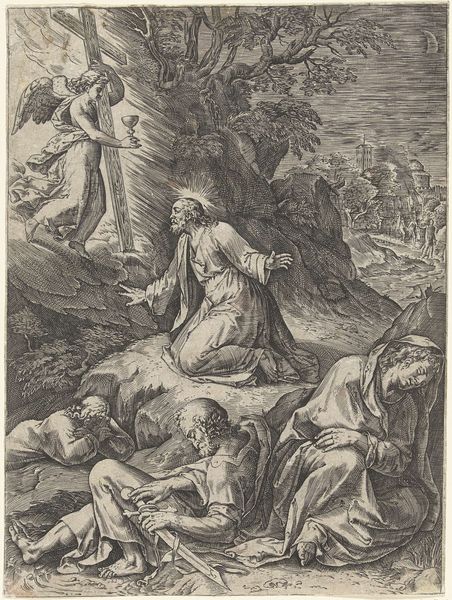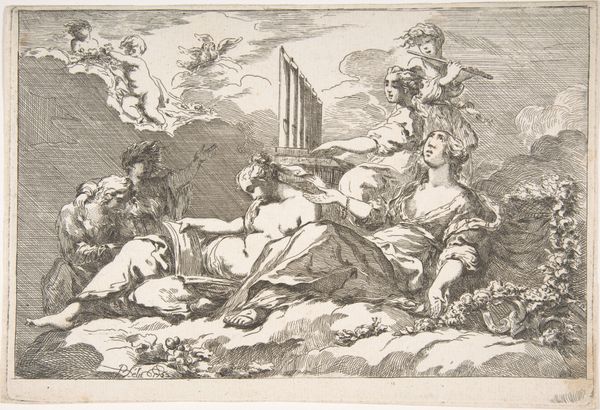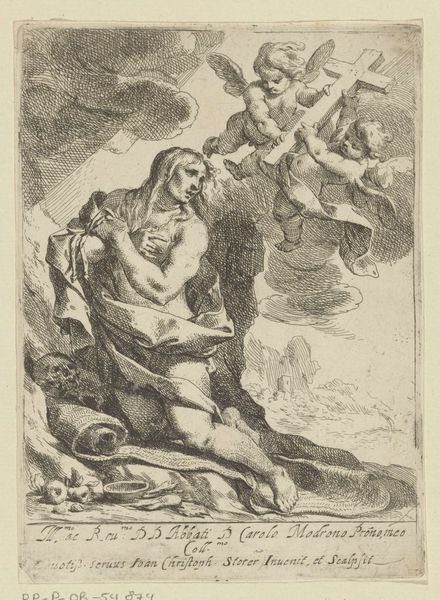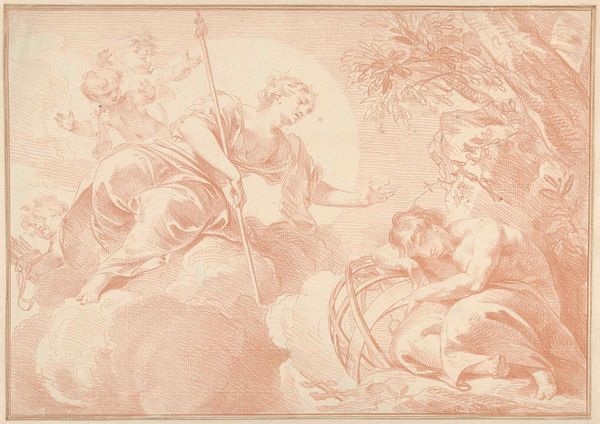
engraving
#
baroque
#
landscape
#
fantasy-art
#
figuration
#
engraving
Dimensions: height 120 mm, width 153 mm
Copyright: Rijks Museum: Open Domain
Curator: We’re looking at "Satyr and Female Figure Shielding Eyes from Sunlight", an engraving from the 18th century currently residing at the Rijksmuseum, attributed to an anonymous artist. Editor: My first impression? A curious mix of drowsy contentment and startled awakening, a snapshot of blurry boundaries between fantasy and reality, like an engraving ripped straight from a fever dream. Curator: That speaks to the artistic context of the time; this imagery was quite common in Baroque landscape art, showcasing scenes from mythology with the addition of naturalism to create escapist fantasies for its viewers. These scenes gained popularity during a time of shifting religious power in Europe as ways to express personal desires of sensuality, intimacy, and liberation. Editor: Liberating for sure, though perhaps the satyr here is in no rush to awaken. Just look at him, sunk into his sleepy stupor. In contrast, the woman's gesture to ward off the sun, it's almost as if she wants to tear through the sleepy dream and claim some new space on the horizon. I wonder, is the sun in this image symbolic? Or a simple warning from the sun god? Curator: Well, given that the engraving dates to the late Baroque period, its symbols were most likely familiar to contemporary audiences who would see common, almost cliché iconography in a piece like this. They perhaps would not analyze it deeply but see a common scene between a woman and a satyr, not a complex relationship between a sun and human. However, Baroque images were generally commissioned and owned by wealthy landowners with specific cultural associations to antiquity; in a world so separate from ours, there is always so much to interpret beyond common clichés. Editor: Fair enough. It does make me wonder about who this image was meant for and the context it lived in. Was it a fleeting fancy on someone's wall, a glimpse of transgression and desire hung just so, or something else? Was this sort of imagery controversial back in the day? Or did its dreamlike atmosphere excuse its latent sensuality? Curator: Certainly there were moral conservatives back then who disapproved, as they often do. However, with the rise of the art market, the commissioning patron of art also shifted from wealthy noble to wealthy bourgeoise who also began appreciating displays of landscapes and figurement beyond royalty and religion. Editor: The more we unravel its context, the more nuanced this simple image becomes. I'll walk away with a whole new lens with which to observe these pieces in the future. Curator: Exactly, seeing these pieces requires contextualising them, placing yourself in their moment of creation and understanding who created what and for what reasons. Only then will an artwork ever start to mean anything to anyone.
Comments
No comments
Be the first to comment and join the conversation on the ultimate creative platform.
